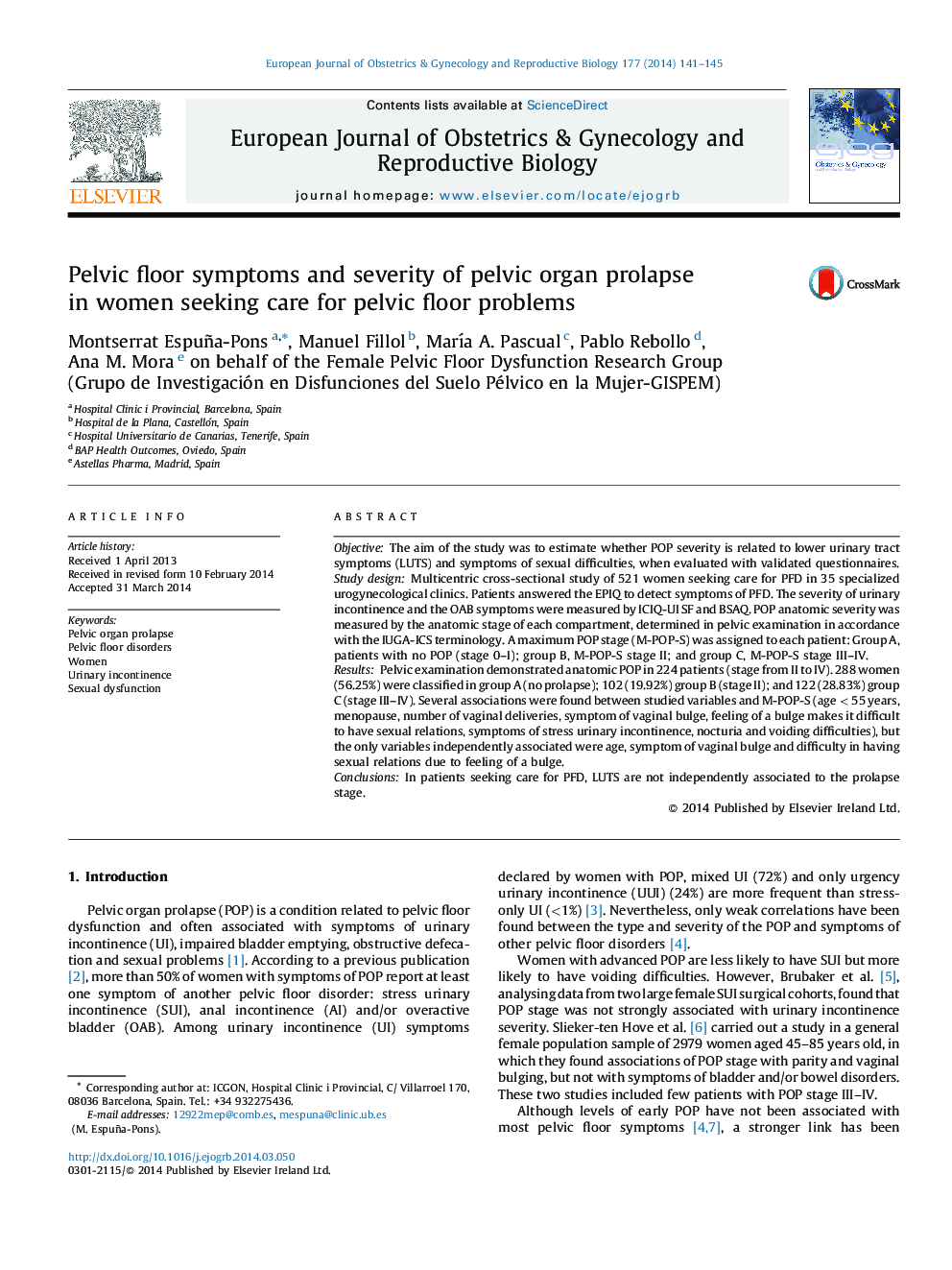| Article ID | Journal | Published Year | Pages | File Type |
|---|---|---|---|---|
| 3919893 | European Journal of Obstetrics & Gynecology and Reproductive Biology | 2014 | 5 Pages |
ObjectiveThe aim of the study was to estimate whether POP severity is related to lower urinary tract symptoms (LUTS) and symptoms of sexual difficulties, when evaluated with validated questionnaires.Study designMulticentric cross-sectional study of 521 women seeking care for PFD in 35 specialized urogynecological clinics. Patients answered the EPIQ to detect symptoms of PFD. The severity of urinary incontinence and the OAB symptoms were measured by ICIQ-UI SF and BSAQ. POP anatomic severity was measured by the anatomic stage of each compartment, determined in pelvic examination in accordance with the IUGA-ICS terminology. A maximum POP stage (M-POP-S) was assigned to each patient: Group A, patients with no POP (stage 0–I); group B, M-POP-S stage II; and group C, M-POP-S stage III–IV.ResultsPelvic examination demonstrated anatomic POP in 224 patients (stage from II to IV). 288 women (56.25%) were classified in group A (no prolapse); 102 (19.92%) group B (stage II); and 122 (28.83%) group C (stage III–IV). Several associations were found between studied variables and M-POP-S (age < 55 years, menopause, number of vaginal deliveries, symptom of vaginal bulge, feeling of a bulge makes it difficult to have sexual relations, symptoms of stress urinary incontinence, nocturia and voiding difficulties), but the only variables independently associated were age, symptom of vaginal bulge and difficulty in having sexual relations due to feeling of a bulge.ConclusionsIn patients seeking care for PFD, LUTS are not independently associated to the prolapse stage.
